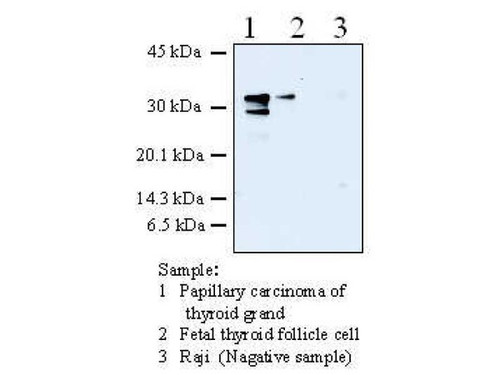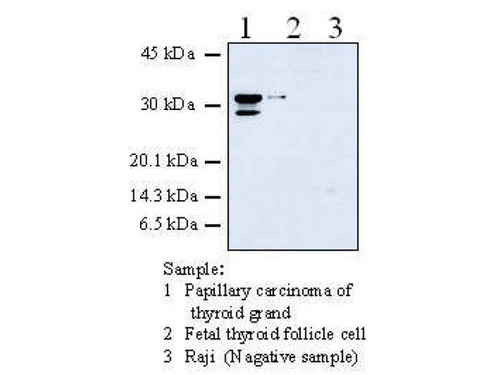Galectin is widely distributed in nematodes, insects, and porifers, as well as vertebrates, and it has also been found to be present in true fungi. Galectin does not just occur in the cytoplasm, it is also present in the nucleus, on the cell surface, in the extracellular matrix, etc., and it is thought to be involved in many biological phenomena, including development, differentiation, morphogenesis, tumor metastasis, cell death, and RNA splicing. Galectin-3 is a β-galactoside-binding protein that has been named IgE-binding protein, CBP35, CBP30, Mac-2, L-29, L-31, L34, etc., and structurally it is a chimera-type lectin composed of a sugar-chain-binding domain (galectin domain) and a non-lectin domain. Its biological function is still uncertain, but many studies that should elucidate its function have been performed, nd as a result participation of galectin-3 has been demonstrated in the biological phenomena of cell growth, adhesion, metastasis, and apoptosis. For example, a positive correlation has been shown between galectin-3 expression and the degree of malignant transformation in certain types of cell lines. A positive correlation has also recently been shown between galectin-3 expression and degree of malignancy in certain types of malignant tumors, and measurement of galectin-3 is expected to possibly serve as an index of degree of tumor malignancy. For research use only, not for use in diagnostic procedures.
- application:
- WB, FCM
- Catalog number:
- 11102-S
- clone:
- 87B5
- concentration:
- 100 µg/mL
- Datasheet:
- formulation:
- Lyophilized product from 1% BSA in PBS containing 0.05% NaN3
- immunogen:
- Recombinant Galectin-3 protein
- isotype:
- IgG2a
- MSDS:
- notes:
- For research use only, not for use in diagnostic procedures.
The datasheet for this product (see above) is intended to serve as an example only. Please refer to the datasheet provided with the antibody for precise details. - Other names:
- Please see datasheet
- Protocol:
- size:
- 10 µg
- storage:
- Lyophilized product, 5 years at 2 - 8°C; Solution, 2 years at -20°C
- Species:
- Human
- Host:
- Mouse
- Additional info:








